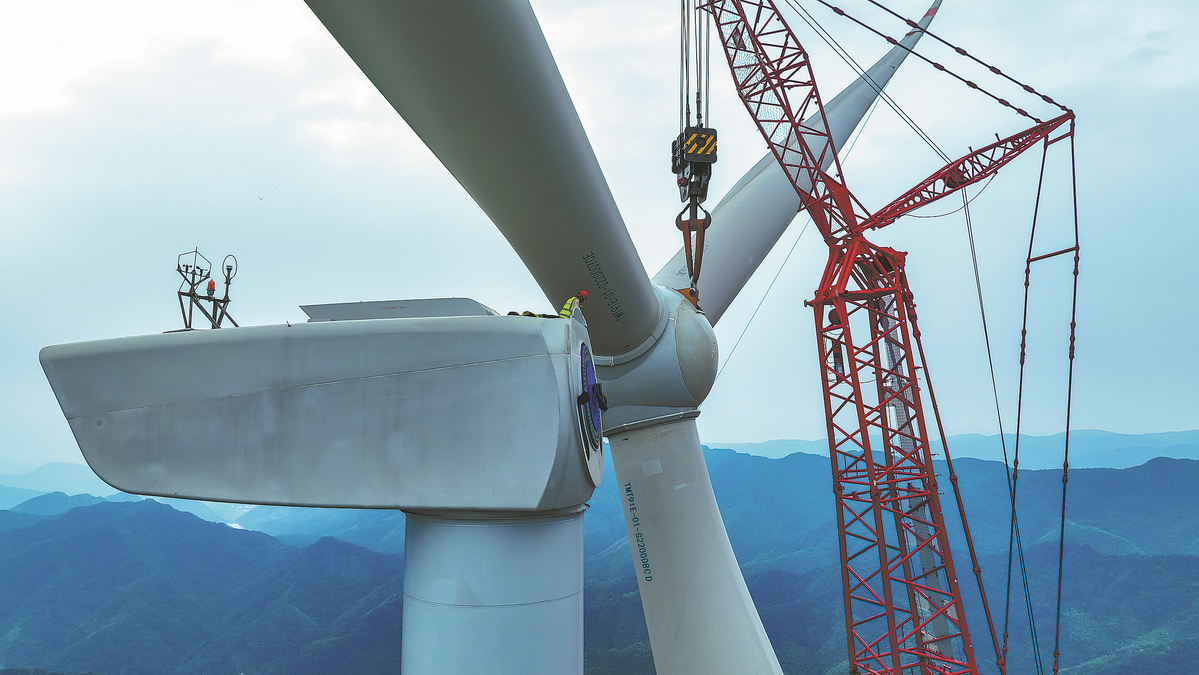
 Your current location:
Your current location:

Technology believed to play key role in maintaining stable power supply
As demand for clean, renewable energy sources surges, there is growing consensus among industry experts that energy storage will play a pivotal role in driving green transition forward in China.
"Energy storage systems, such as advanced batteries, pumped hydro storage and compressed air energy storage, will play a key role in maintaining a stable energy supply from various renewable sources," said Ye Xiaoning, senior engineer from the new energy department of the State Grid Energy Research Institute.
These technologies are crucial for capturing excess energy during peak production times and releasing it during periods of low production, ensuring a consistent and reliable power flow, he said during the release of an analysis report on China's new energy generation in Beijing last week.
According to the report, new energy generation capacity has continued to grow rapidly in China in recent years and has gradually become the main source of newly added generation capacity.
The national cumulative installed capacity of new energy surpassed 700 million kilowatts by the end of 2022, and electricity generation exceeded 1 trillion kilowatt-hours for the first time last year. The utilization rate of new energy has remained consistently above 95 percent for five consecutive years since 2018, comparable to the levels in developed countries like Germany, it said.
On the other hand, the construction of new energy grid integration and transmission projects also strengthened, leading to the enhancement of the capability for optimized allocation of new energy resources on a large scale, said the report.
Energy storage will serve as a pivotal and essential technology to support the green transition of power systems in the country, it said.
According to Shi Zhiyong, senior engineer from the State Grid Energy Research Institute, energy storage provides a variety of services for power system operations, including peak shaving, frequency regulation and reserve capacity.
It has proven to significantly enhance the utilization of renewable energy sources such as wind and solar power while supporting distributed power generation and micro-grids, acting as a key technology to facilitate the transition from fossil fuels to renewable energy sources, he said.
According to Shi, the current landscape of energy storage encompasses diverse technologies, from battery storage to pumped hydro-electric storage and compressed air energy storage, each with its unique techno-economic characteristics.
This multiplicity of options will likely persist in the short term, he said.
Battery technologies, for instance, are renowned for their rapid response times and modularity, making them well-suited for applications requiring quick adjustments. Additionally, pumped hydro storage excels in providing large-scale, long-duration storage, ideal for seasonal energy imbalances, according to the report.
The institute suggests that policymakers and investors consider not only the current state of technology but also anticipate future trends, advancements and integration possibilities, while laying out the development blueprint of the country's energy storage market, to ensure selected energy storage solutions align with both the technical demands and economic considerations of the rapidly evolving energy sector.
Lin Boqiang, head of the China Institute for Studies in Energy Policy at Xiamen University, agreed by saying that diverse technologies not only encourage innovation, but also help lower costs.
As technological advancements continue to emerge, costs are expected to decrease, with improved efficiency and an enhanced overall performance of energy storage systems, he said.
According to the institute, as the development of China's electricity spot market is still in its pilot phase, the scale of new energy storage facilities is too small to participate in the medium- to long-term market and spot market.
While new energy storage facilities only engage in the peak-shaving ancillary services market and the frequency regulation ancillary services market for now, it is expected that further integration and participation of energy storage in various market segments will occur, as market infrastructure matures and new energy storage technologies evolve, it said.